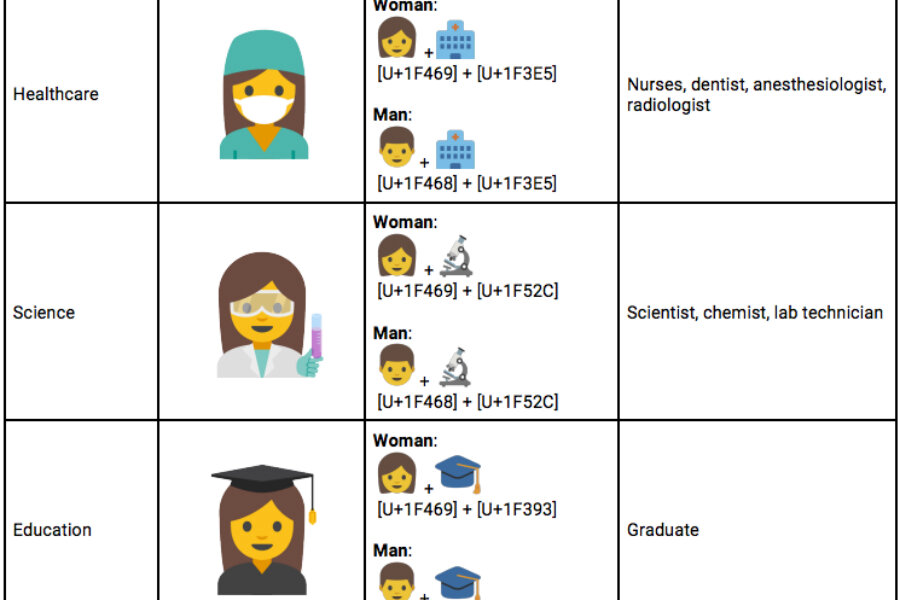Can emojis promote gender equality?
Loading...
Google employees hope to achieve something big with tiny emojis: gender equality in the world of text messaging.
Four employees of the search giant, Rachel Been, Nicole Bleuel, Agustin Fonts, and Mark Davis, have created a series of 13 female emojis depicting women in professional roles – including an executive, a welder, and even a rock star. The authors have submitted their proposal to the Silicon Valley-based Unicode Consortium, a member organization that, among other things, oversees the addition of emoji characters. Its members include Apple, Facebook and Microsoft, as well as Google.
"No matter where you look, women are gaining visibility and recognition as never before. Isn't it time that emoji also reflect the reality that women play a key role in every walk of life and in every profession?" wrote the employees, in a document presented to the consortium Tuesday.
"Our proposal is to create a new set of emoji that represents a wide range of professions for women and men with a goal of highlighting the diversity of women’s careers and empowering girls everywhere."
The move is similar to Apple's emoji update in the spring of 2015 that introduced a range of emoji skin tones beyond the default yellow.
The four authors hope the organization will add the emojis by the end of this year, Newsweek reported. Their addition could diffuse persistent criticism that emoji characters are biased toward men, which reflects persistent criticism of the tech industry as discriminator against women and minorities. Because of emojis' popularity and prevalence, these 13 new characters could bring gender parity to the way smartphone users express themselves when sending a text message.
Six billion emojis are sent everyday, and women under 30 are the most frequent emoji users, according to the proposal. Yet, women have fewer options for an emoji that describes their workday or could congratulate a female friend on, say, landing tenure.
Amy Butcher, author of a recent New York Times opinion article and an Ohio Wesleyan University English professor, came to this conclusion after she questioned her choice of a unicorn emoji in congratulating her friend on her achievement.
"I began to scroll through the emojis on my phone. Yes, there were women's faces, and tiny women’s bodies. But for the women actually engaged in an activity or profession, there were only archetypes: the flamenco dancer in her red gown, the bride in her flowing veil, the princess in her gold tiara," wrote Weston.
If the consortium accepts the proposal, it will add 26 new emojis: 13 of professional women, along with 13 corresponding emojis of men. The jobs include white-collar professions – a manager, a physician, a scientist, and, of course, a software engineer – as well as blue-collar jobs including a mechanic and a farmer.
The consortium, whose president and co-founder Mark Davis is one of the four signatories to the new proposal, anticipates adding about 60 emojis each year.
The proposal comes in the wake of allegations that Silicon Valley discriminates against women. Some 60 percent of women in the industry say they have been sexually harassed. And the industry's largest and most powerful companies have been criticized for maintaining a workforce that is predominately male and predominately white.







